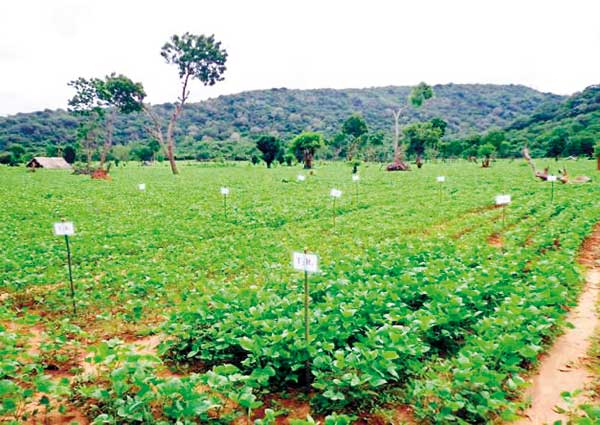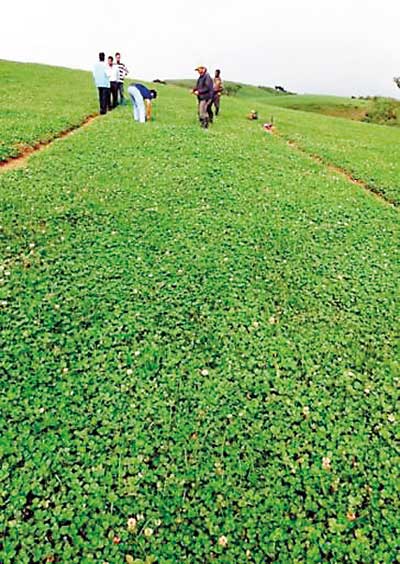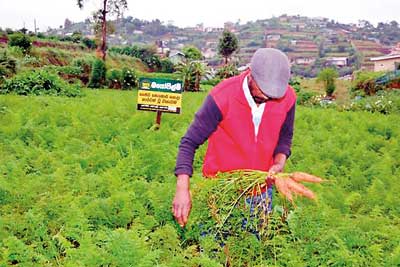Reply To:
Name - Reply Comment
Last Updated : 2024-04-18 20:29:00

 The use of chemical (synthetic) fertilizer is a standard practice in modern -day high input agriculture. Such inputs without doubt boosted food production to meet the growing demand of an increasing world population and ward off large sale-starvation. Nonetheless, continuous and indiscriminate use of chemical fertilizers often in excess of requirements has not only made food production too costly (particularly for developing countries) but also increased environmental pollution to alarming levels and directly contributed to the aggravation of environmental health problems. The UN publication Global, Environmental Year Book 2003, stated that more than 160 million metric tons of N-fertilizer ends up in the oceans annually and this has doubled the ocean’s dead zones (anoxic areas without aquatic life) since 1990. A more recent publication UNEP Year Book 2014 states that the 150 dead zones reported in 2003 have now increased to 500 dead zones! Usually such dead zones are located near coastal areas associated with high anthropogenic activities and large effluent discharges to the oceans including fertilizer wash-offs.
The use of chemical (synthetic) fertilizer is a standard practice in modern -day high input agriculture. Such inputs without doubt boosted food production to meet the growing demand of an increasing world population and ward off large sale-starvation. Nonetheless, continuous and indiscriminate use of chemical fertilizers often in excess of requirements has not only made food production too costly (particularly for developing countries) but also increased environmental pollution to alarming levels and directly contributed to the aggravation of environmental health problems. The UN publication Global, Environmental Year Book 2003, stated that more than 160 million metric tons of N-fertilizer ends up in the oceans annually and this has doubled the ocean’s dead zones (anoxic areas without aquatic life) since 1990. A more recent publication UNEP Year Book 2014 states that the 150 dead zones reported in 2003 have now increased to 500 dead zones! Usually such dead zones are located near coastal areas associated with high anthropogenic activities and large effluent discharges to the oceans including fertilizer wash-offs. beyond the project period due to the absence of a low cost, locally available carrier material for transport and storage of inoculants under farmers’ conditions. This limitation was overcome by the findings at the NIFS in 1999 of the suitability of modified coir dust as a carrier material. This breakthrough enabled the field testing and eventual introduction of inoculants to soybean farmers in 2007. Today around 10,000 acres of soybean is cultivated per season with coir dust -based rhizobial inoculants prepared by the NIFS that can completely replace the use of urea fertilizer.
beyond the project period due to the absence of a low cost, locally available carrier material for transport and storage of inoculants under farmers’ conditions. This limitation was overcome by the findings at the NIFS in 1999 of the suitability of modified coir dust as a carrier material. This breakthrough enabled the field testing and eventual introduction of inoculants to soybean farmers in 2007. Today around 10,000 acres of soybean is cultivated per season with coir dust -based rhizobial inoculants prepared by the NIFS that can completely replace the use of urea fertilizer.
Add comment
Comments will be edited (grammar, spelling and slang) and authorized at the discretion of Daily Mirror online. The website also has the right not to publish selected comments.
Reply To:
Name - Reply Comment
On March 26, a couple arriving from Thailand was arrested with 88 live animal
According to villagers from Naula-Moragolla out of 105 families 80 can afford
Is the situation in Sri Lanka so grim that locals harbour hope that they coul
A recent post on social media revealed that three purple-faced langurs near t

10 Apr 2024
09 Apr 2024